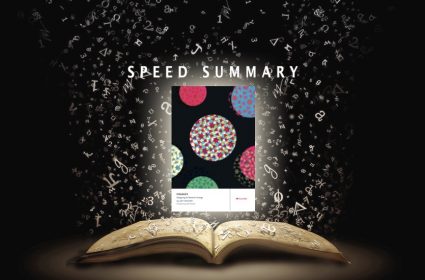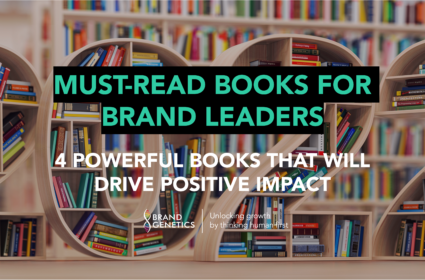The Consuming Instinct [Speed Summary]

- The Consuming Instinct: What Juicy Burgers, Ferraris, Pornography, and Gift Giving Reveal about Human Nature
- Author: Gad Saad
- Publisher: Prometheus
- Publication date: 2011
Reasons not Rationalisations
Ask consumers the reasons why they buy the stuff they buy, and you’ll probably get rationalisations, not reasons. Rationalisations are the ‘justifications’ we make to ourselves – and to others – for why we’ve bought something. But the real reasons may be quite different to rationalisations; they may be private, hidden or even unconscious.
Enter The Consuming Instinct, an overview of the underlying reasons we buy things from the perspective of evolutionary psychology by Concordia professor of marketing Gad Saad. The basic idea is simple; we buy things that appeal to our innate human nature; specifically to four evolved instincts – survival, sex, kin and reciprocity.
- Survival Instinct – self-preservation is a key driver of consumer behaviour, so we’re naturally drawn to innovations that appeal to this drive. Think Volvo, a brand built on safety associations. Importantly, this survival instinct may include inherited preferences that are more adapted to the survival of our prehistoric ancestors than to us today. For example, we may like juicy burgers not because calorie-rich foods are good for us today, but because calorie-rich foods helped our ancestors survive in the lean times of our hunter-gather past. Similarly, our taste buds may have evolved to alert us to food pathogens, whilst our aesthetic preferences may be influenced by environments and shapes associated with safety and predator-avoidance.
- Sex Instinct – reproduction is a key driver of human nature and consumer behaviour. Indeed choosing a mate can be thought of as the ultimate consumption decision,with pornography serving as a form of shopping research – primarily for males attracted to physical signals of youth, genetic fitness and fertility. The practical upshot is that we’re motivated to buy stuff that we think makes us look good to potential mates – and to allies (partly because allies make us even more attractive to potential mates). So the Ferrari brand, overwhelmingly a male purchase, is like a petrol-powered peacock tail, used (often maladroitly) to display desirability – elevated social status and differential access to resources. But if men collect cars, women collect shoes; high heels can serve to accentuate youth and sexual desirability. For innovators, what all this means is that the ‘display’ value of an innovation in ignoring desirability is as key as any intrinsic value; once you see human interaction as a contest to signal mating fitness, you never see it as anything else.
- Kin Instinct – human nature is about more than the selfish drives for self-preservation and sex. Much of what we do, and buy, is selfless or altruistic; investing in others at a cost to ourselves. Interestingly however, the people most likely to benefit from our selfless acts and altruistic purchases are those with whom we share our genes – our family. Indeed, the more genes we share with our relatives, the more likely we’ll buy and pay for them. For example, we may pay £100 for a gift for a direct relative who carries 50% of our genes (children, siblings, parents), but only £50 for grandchildren or grandparents with whom we only share 25% of our genes. The key point for innovators is that one of our core consumer instincts is to help kin – and we should innovate accordingly. Value is not just about the personal value a product has for an individual, purchases are driven by the ‘inclusive value‘ they have for an individual and the family unit. Another non-obvious but real kinship-related innovation opportunity noted by Saad is to help children maximise the investment they get from their fathers. Because of ‘paternal uncertainty’ (the fact that without DNA testing, men don’t know if they are the true father of the child they are rearing), acting fathers invest differentially in children who share their own traits. This explains the natural desire of a child to imitate, emulate or resemble their apparent father; any products or services that help do this will hover natural kid-appeal.
- Reciprocity Instinct – the fourth corner of human nature is our instinct to help others who help us. Our desire to reciprocate appears to be a human universal; it’s a tit-for-tat thing – if someone helps us, then we naturally want to help them back. This instinct to reciprocate is the psychological ‘glue’ of human bonding that makes relationships, cooperation, social alliances and ultimately society possible; it’s a form of enlightened self-interest known as ‘reciprocal altruism’. Psychobabble aside, the important insight for innovation is that much of what we buy is to pay back debts, or create new debts for others who will pay us back in the future, making gifting a psychologically rich territory for new product development. Beyond gifting, innovations can serve to signal group identity and with whom we’re willing to reciprocate; brands, fashion and sports serve as signal ‘in-group’ affiliation and a readiness to reciprocate favours.
The BG Take
Yes, it’s reductionist, and yes, it’s ‘sexist’ in that it highlights sex differences in human nature. But The Consuming Instinct is practical, insightful and useful for innovators. This is because it helps make innovation more commercially viable; rather than focus on a niche needs for a particular ‘type’ of consumer, The Consuming Instinct helps us focus instead on innovation opportunities that will have universal appeal because they appeal to our universal human nature.
What we particularly like about The Consuming Instinct (apart from useful the four-box motivational matrix for understanding human nature) is the insight that successful innovation is not just about understanding what appeals to human nature. Smart innovation is also about understanding our natural aversions too. The chapter, Marketing Hope by Selling Lies, reveals a rich seam for innovation to plunder by playing to biological insecurity – our fear of our own genetic limitations, ageing and ultimately death. Selling hope in the face of mortality and meaninglessness remains prime real-estate for innovation. Recommended.



